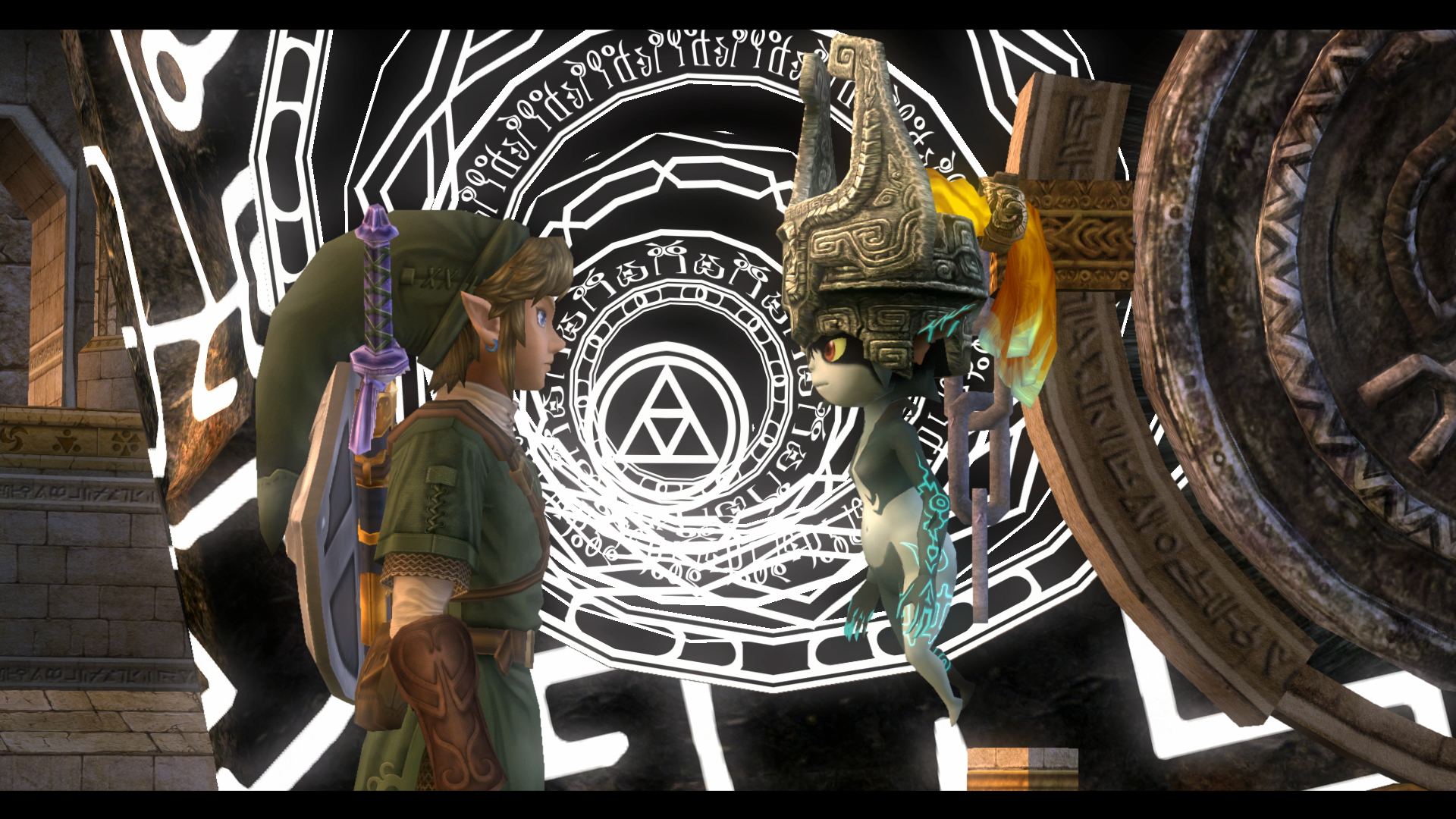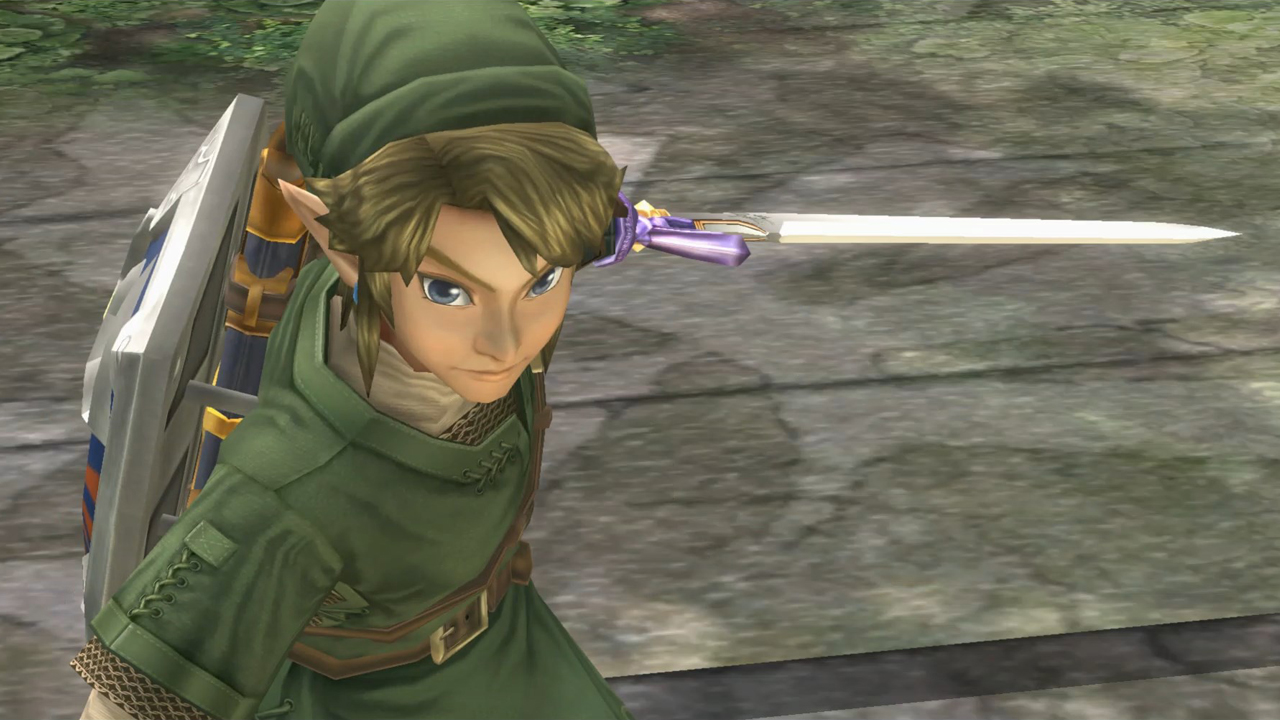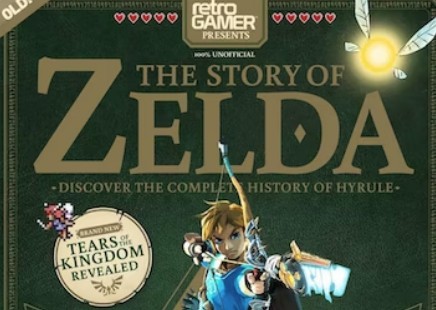The Legend of Zelda: Twilight Princess marked the end of the GameCube era and the dawn of the Wii
An exploration of how Twilight Princess moved with the times

Over the course of 130 years, Nintendo has proven itself to be a near-peerlessly pioneering company. From playing cards, to the Game Boy, to the Switch, the Japanese giant has regularly torn up the rule book when it comes to home entertainment. That's what makes The Legend Of Zelda: Twilight Princess a relatively rare Big N creation: it's a game that leans deeply into overtly comfortable, well-worn nostalgia.
This isn't a game that tried to chart the bold series redirection Wind Waker set sail for. Instead, this Wii launch title was more concerned with copying Ocarina Of Time's homework in the hopes of mimicking the magic of the Nintendo 64 masterpiece. Twilight Princess is the ultimate act of giving Zelda fans what they thought they craved. Despite Wind Waker being a stone-cold 10/10 critical classic, those wonderful cel-shaded visuals turned many western consumers cold. With the gift of hindsight, those incredibly demanding Nintendo fans should have been a little more understanding.
Looking good


After sluggish sales of the GameCube great in the US, director Eiji Aonuma told the series' original creator – and all-round Nintendo icon – Shigeru Miyamoto that Wind Waker's sequel needed a more realistic look to boost its sales success. The result was a gorgeous, yet somewhat less creatively courageous Legend Of Zelda entry. This being Nintendo, Twilight Princess is still a masterpiece. Does it come off as a slightly off-key warm-up act next to the timeless brilliance of Ocarina? Maybe a little. Still, there's zero shame in playing (a still amazing) second fiddle to arguably the greatest game of all time. It may not be as iconic as A Link To The Past, or as genre-redefining as Breath Of The Wild, but when it comes to classic Zelda design and superior dungeons, Twilight Princess knocks it out of the moon-worshipping park. Although unlike Majora's Mask, the lunar antics of that orb are limited to a bit of nighttime howling, rather than the Joker-style smiling Nintendo 64 moon crashing into Earth.
Ah yes, the wolf. Every Zelda needs a gimmick – Wind Waker had the dinky boat, Ocarina its time-bending instrument – and lupine Link is Twilight Princess'. Thanks to the titular 'Twilight', our tunic-sporting hero is turned into a cosmic canine within the first couple of hours of this adventure. Rather than eat backpackers on the moors American Werewolf In London-style, Link's more carnivorous tendencies are held back by the devilishly cheeky Midna. Far less annoying than Ocarina's infamous Navi, the diminutive demon helps the elf navigate the Twilight area, which usually involves lock-on guided platforming sections and hunting down giant, electricity-spewing bugs.
Let's not skip past those infuriating insects. Just as with its successor, Skyward Sword, and that game's equally repetitive Silent Realm collect-a-thons, the hunts for Shadow Insects in Twilight Princess quickly grow tiresome. While Wolf Link is fun to control, chasing down Tears Of Light by eviscerating paranormal creepy crawlies during the game's Twilight sections outgrows its welcome before long. It may be one of the all-time great video game franchises, but Zelda has always been guilty of overusing collection tropes. While the wolf sections are only partially successful, at worst, they're never much less than a semi-welcome palate cleanser. Where the game truly flourishes is when it focuses on being a classic Legend Of Zelda adventure. Wisely cutting out the open-world sailing bloat of Wind Waker, Twilight Princess instead hones in on recreating what made Ocarina Of Time such a success. That means the central focus is on impeccable dungeon design. While it's still a blast to gallop around Hyrule Field with Epona, the game shines at its brightest when Link is slashing beasties and solving puzzles in one of his adventure's headline dungeons.
Safe or not, leaning into the series' traditions is almost always to Twilight Princess' benefit. While the King Of The Red Lions sentient sailboat was fun enough to salmon through the waves in Wind Waker, there's something undeniably comforting about being reunited with Epona in Link's GameCube final big hit/Wii debut. Having been absent for Majora's Mask and the GameCube's cel-shaded predecessor, this was the first time Nintendo fans had gotten to ride the iconic equestrian in eight years. Not to miss a trick, Twilight Princess wisely leans into the Epona thirsting by making you herd a group of goats a couple of times within the opening act. When it comes to pitch-perfect notes of fan-pleasing nostalgia, few do it better than Nintendo.
Dungeon calling

"Twilight Princess may not be as imaginative, but hoo-boy are its dungeons ever a delight to solve."
Before we ladle heaping amounts of praise on the dungeons, Link's best four-legged girl deserves her moment in the spotlight. This is definitely the best version of Epona there's ever been. Not only do you unlock the majestic mount pleasingly early into the quest, but when you do, she proves more ass-kicking than ever. Link's pony pal can't just out-jump Ocarina's version, she's also far more satisfying to take into combat. One of the game's best setpieces involves a protracted horseback clash with King Bulblin as he and his goblin-like goons ride fantasy warthogs into battle against Link and Epona. It's an electrifying moment, and arguably the sort of brilliantly choreographed set-piece only Nintendo, Naughty Dog and Sony Santa Monica can pull off.
Weekly digests, tales from the communities you love, and more
One of the few (if only) criticisms you could lay at Breath Of The Wild's door was the dungeons weren't quite up to scratch. For all of the Switch launch title's dizzying physics and effortless open-world inventiveness, beating the conundrums and bosses contained within each Divine Beast felt a little samey and visually uninspired. Twilight Princess may not be as imaginative, but hoo-boy are its dungeons ever a delight to solve. But yes, you will have to get over not preparing immaculately cooked, health-boosting stew in order to succeed.
Forget food. In Twilight Princess, all that matters is a degree of common sense. From beating an ape with a colossal, oh-so-red backside in the opening Forest Temple, to mastering the Double Clawshot in the City In The Sky like a gravity-defying, pointy-eared gymnast, the game's dungeons feel incredibly bespoke. Often confounding, sometimes a little frustrating, but always guaranteed to deliver satisfying 'ah ha!' moments, alongside all the boss spectacle you'd expect, Twilight Princess may just have the best temples in Zelda history. As compliments go, they don't get any loftier. Oh, and the previously mentioned City In The Sky? That's one of the alltime GOATs. Not only is its twisting labyrinth of monkey bars in the clouds a delight to navigate, but its awesome final boss takes several terrifying cues from Metroid's iconic Meta Ridley.
A special mention for the Goron Mines dungeon, too. For all the times Zelda has so thoroughly worn out the fire world gimmick, Twilight's second temple is the best roasty-toasty labyrinth Link has ever danced with. Thanks to some gleefully silly upside-down sections courtesy of Link's Iron Boots, and a sensational boss in Fyrus – who couldn't be more closely resembled with Lord Of The Rings' Balrog if he was spooning Gandalf while pulling him into a pit of eternal doom – the Goron Mines are Zelda's ultimate take on the fire land trope. Even two decades after its initial release, the series could still pull off the definite take on dungeon ideas it had created back in the NES days.
It's not just the dungeons that deservedly hog the limelight. As with other all-timer Zelda games, Twilight Princess makes a habit of making its 'filler' moments truly memorable. The ultimate payoff may always be some big boss at the end of a dungeon you're three hours away from vanquishing, but it's in the knowingly silly between moments where Twilight Princess cements itself as one of Link's best games. Whether it's unwittingly helping catch a hungry cat its dinner during a spot of aimless fishing, using a hawk to knock off a pesky beehive, or racing a soup-loving yeti down a colossal hill, this is a game that can entrance even during its seemingly quieter moments.
Regardless of the lovely moments of random levity, the fact the dungeons are so strong doubles down on the fact Twilight Princess is very much Zelda at its most traditional. In the near-40-year history of the series, few entries in the franchise have played it quite as straightforwardly as this entry. Not that fans, or indeed critics, were complaining back then. Twilight Princess currently sits on a ludicrous 95/100 on Metacritic. Despite the universal praise, there's no denying this is a Zelda that plays it more conservatively than both what came before and after. Less visually distinctive and brave than Wind Waker, not as tonally interesting as Majora's Mask, and not as envelope-pushing as Breath Of The Wild, this is a safer, albeit brilliant Legend Of Zelda game.
It is that first and foremost, though: a fundamentally 'safe' game. Years before, Nintendo had wowed audiences with a Link-versus-Ganon tech demo that many fans had hoped would become the next proper Legend Of Zelda game. Then the wonderful, albeit graphically leftfield Wind Waker turned up, all adorable Pixar cheeriness and cherub-cheeked fun, and a significant part of the fanbase lost their collective shizzle. In an indy-dominated era that welcomes, encourages and embraces visually distinctive looks, the backlash to Wind Waker looks positively bizarre all these years later. And yet, many hardcore Zelda fans wanted a more traditional version of Link. The sort of drop-dead-gorgeous elfin hero suggested in the dreamy art style of Ocarina Of Time's manual, yet one the technically limited Nintendo 64 could only hint at, rather than actually deliver on.
A link to the past

"Twilight Princess also deserves credit for being one of the most focused games in Zelda history."
Looking back, it's easy to forget just how big a deal Link's appearance in Twilight Princess was. After offending a fair portion of the fanbase with Wind Winker's cel-shaded fairy boy, Nintendo created by far the most graphically realistic version of the character there had ever been. Ask Zelda fans which design they prefer now, and that adorable seafaring, ultra-cartoony version of the Hero Of Time probably wins the popular vote. Back in 2006 though, Wii owners couldn't have given the returning, far more traditional Link a warmer welcome. If Nintendo played it safe with Link's look, the same is doubly true for how the company decided to tackle the Wii's then-pioneering motion controls.
Despite being the only Big N franchise that can come close to going toe-to-toe in terms of prestige with Mario, Zelda has a curious recent history of being a series that hedges its bets between console generations. Just as Breath Of The Wild was originally a Wii U swansong that then became the glistening jewel in Switch's launch line-up, Twilight Princess was also a somewhat mishandled, generation-spanning title. Years before the Wii got its MotionPlus upgrade, Link had to make do with the far less sophisticated launch Wiimote. Even then, the game barely used the motion capabilities of Nintendo's incredibly popular console. While Skyward Sword would implement true motionbased sword slices thanks to an upgraded controller, Twilight Princess was stuck with basic waggle controls; an inevitable by-product of the project being a GameCube title first and foremost.
Regardless of the platform you play on though, Link's combat remains sharp. Wii-specific controls were always thin on the ground, but such is the strength of the series' core combat that the lack of waggle in the GameCube version is never an issue. Wisely adopting the Z-targeting of N64 greats like Ocarina and Majora's Mask, Twilight Princess presents an elegant, uncomplicated combat system that never gets bogged down in try-hard motion controls. Seeing as the Wii was defined by legions of games where you had to waggle your limbs to near exhaustion, it's harsh to overly critique Twilight Princess for not fully committing to the console's central gimmick.
Where other games would be summed up by a 'lightning in the bottle' electricity that would capture the world's imagination unlike almost any other console generation – we're looking at you, Wii Sports – Link's 2006 adventure was simply content to be an excellent Zelda game. A little unambitious? Perhaps. Maybe a smidge too fan-pleasing? It could be argued. Ultimately, this is an undeniably superb video game, purely because Nintendo had two decades to perfect the formula.
Twilight Princess also deserves credit for being one of the most focused games in Zelda history. Whereas past titles would force you to endure tedious sidequests just for the privilege of earning an adult-sized wallet that could hold all the rupees you needed, Twilight Princess is happy to let Link fill his pockets with relative ease. This is a game solely focused on awesome dungeons and very little filler content in between. In an era of offensively long Assassin's Creed titles, a lot of modern games could benefit from TP's sub-40-hour brevity. This structural breeziness extends to the overall game as a whole, and aside from those creepy-crawly-hunting side-quests as Wolf Link, Twilight Princess is refreshingly streamlined as Zelda games go. More than any other 3D Zelda title, this is the game that laser-focuses on excellent dungeons, memorable boss fights, and an iconic take on the Link-and-Zelda relationship. It may not be the boldest or bravest entry, but it is undeniably remarkable. In an age where there's an unquestionable desire to hone in on the familiar yet still marketable past of the medium, Twilight Princess taps into both the safe and sensational.
If you're keen on revisiting Twilight Princess in this modern age, your options are limited but strong. Are you still the owner of a Wii U? Then the 2016 HD remaster remains a decent option for replaying this classic on modern displays. An ever better way? If you own the disc version of said high-definition redux, you can experience Link's moon-centric quest at 4K resolution on a modern PC via the amazing Cemu emulator. As an iconic series that does nothing but put out exceptional games, Twilight Princess is predictably brilliant. It's also that rare Zelda exception, in that it's oddly compromised. A farewell to the GameCube while also being a launch game that didn't quite do justice to the Wii's USP, this is Link playing at his most defensive. With the fullness of time, it's easier to have admiration for the likes of Wind Waker, Majora's Mask, and Breath Of The Wild, which all took bigger chances than Twilight Princess. If you're going to aim for greatness though, your sights may as well be set on the GOAT, and with Ocarina Of Time, Link's wolf-focused quest might just be one of the best cover acts of all time.
Keep up to speed with all of our celebratory Zelda coverage with our The Legend of Zelda celebration hub

David has worked for Future under many guises, including for GamesRadar+ and the Official Xbox Magazine. He is currently the Google Stories Editor for GamesRadar and PC Gamer, which sees him making daily video Stories content for both websites. David also regularly writes features, guides, and reviews for both brands too.


